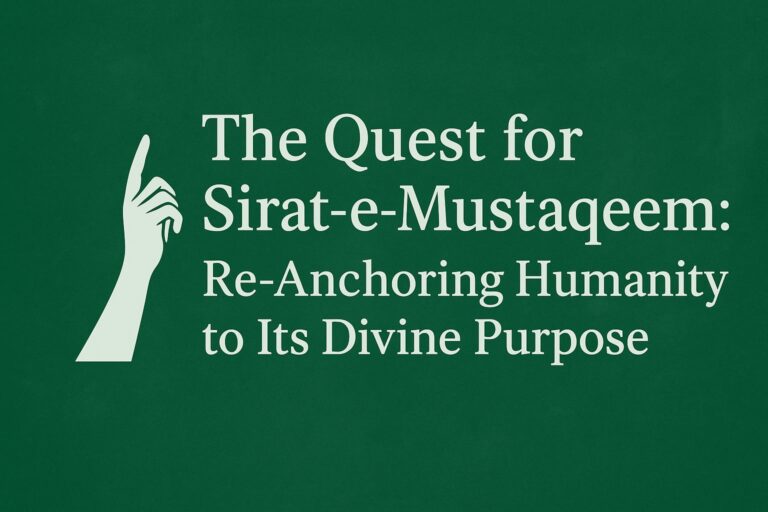https://mrpo.pk/independence-day-pakistans-journey/
Indian Leaders’ Threats and Predictions About Pakistan’s Failure, Before and After Independence
Before Pakistan’s creation in 1947, several Indian leaders strongly opposed the idea of a separate country for Muslims.
- Jawaharlal Nehru (future Prime Minister of India) argued that Pakistan would not be able to survive on its own. He claimed it would have no proper economy, industries, or government structure and would soon have to turn back to India for help.
- Vallabhbhai Patel (future Deputy Prime Minister) warned that Pakistan would be a “weak and unstable” state and predicted it might break apart or come back to India.
- Mahatma Gandhi, while publicly speaking of peace, also told Muslim leaders that Pakistan could face great difficulties and would not be able to function without India.
After independence, these views continued.
- Nehru repeatedly said in speeches that Pakistan might collapse within a short time due to its economic and political challenges.
- Patel remarked that Pakistan’s survival was doubtful because it lacked resources and faced the refugee crisis.
- B. R. Ambedkar (Law Minister of India) wrote that Pakistan could not sustain itself for long because it had very few industries, and most trade routes were in India.
Such statements were widely reported in Indian newspapers and speeches, aiming to spread the belief that Pakistan was not viable. Despite these predictions, Pakistan overcame many early struggles, mass migrations, war over Kashmir, shortages of funds, and built its own industries, agriculture, and defence.
Milk is distributed to children at a refugee camp in Multan, Pakistan
Refugee Crisis and Rehabilitation
The early challenges of Pakistan’s partition from British India triggered one of the largest human migrations in history. Millions of Muslims made the arduous journey from India to Pakistan, quickly swelling the population. Imagine a sudden influx of 4 to 5 million people crossing borders in a matter of months. Many arrived with nothing but hope and memories, seeking shelter, food, and work. Pakistan, still finding its feet, scrambled to provide housing and necessities. The challenge was more than logistics; it was the emotional weight of uprooted lives and the sheer scale of rebuilding displaced communities. Food shortages and unemployment cast a long shadow, with cities like Karachi undergoing rapid transformation to accommodate new arrivals.
Territorial Issues and the Princely States
The dream of Pakistan was undercut by geopolitical drama, especially concerning the princely states. The British had left the decision of accession to India or Pakistan to these semi-autonomous territories, leading to intense contestations. The “Clifford Award” or Radcliffe Award contested the district of Gurdaspur, awarding it to India despite its Muslim-majority population, a move many Pakistanis view as betrayal since Gurdaspur was the key link to Kashmir.
Then there were states like Junagadh, Hyderabad Deccan, Bhopal, and most prominently, Kashmir. Junagadh’s Muslim ruler opted for Pakistan, but the Hindu-majority population and India’s military pressure resulted in its annexation into India. Hyderabad was a wealthy state with a Muslim Nizam but a Hindu majority population; India forcefully integrated it after a treaty failed. Kashmir’s partition resulted in the first Indo-Pakistani war (1947-48), leaving the region divided but disputed, a flashpoint echoing to this day.
Economic and Military Asset Disputes
Pakistan faced difficulties in securing its fair share of financial assets and military equipment from the former British Indian government. India’s reluctance to transfer proportional assets meant Pakistan started with a handicap. Financial institutions, major industries, and army stockpiles were mostly located within Indian territory, forcing Pakistan to develop its infrastructure almost from zero. This disparity made defence and economic stability early, uphill battles.
Administrative and Institutional Development
Building a functioning government wasn’t as simple as flipping a switch. Pakistan had to establish institutions largely from scratch. The bureaucracy and military had to be divided between Pakistan and India, with significant disruptions and shortages of trained personnel. Political leaders, mostly landlords without administrative experience, were tasked with running a state under immense pressure. Karachi, initially Pakistan’s capital, rapidly transformed from a port city into an administrative and economic hub, accommodating millions and handling governmental functions.
Kashmir Conflict’s Early Flashpoints
The dispute over Kashmir set a tense backdrop for the newborn state. After the tribal invasion supported by Pakistan and the Maharaja’s accession to India, conflict erupted into open war. The UN brokered a ceasefire in 1949, but the Line of Control was born, hindering peace while solidifying territorial divisions. The Kashmir conflict underscored Pakistan’s security concerns and shaped many of its early foreign and defence policies.
Constitutional Progress and the Objectives Resolution
In 1949, Pakistan’s Constituent Assembly passed the Objectives Resolution, a foundational document that outlined the country’s commitment to an Islamic framework alongside democratic values like freedom, equality, and justice. It set the tone for Pakistan’s future constitution, but framing a permanent constitution would be delayed for years, sowing seeds of future political instability.
Economic and Social Struggles
Economically, Pakistan was underdeveloped and heavily reliant on agriculture, with outdated systems and limited industrialisation. Most financial institutions, skilled labour, and industries remained in India, making economic self-sufficiency a distant goal. Karachi’s rapid growth into an economic hub was a bright spot, symbolising hope and potential amid scarcity and disruption. The shortage of skilled workforce slowed development, yet efforts to build infrastructure and industry began taking shape.
Looking Back with Insight
These early years of Pakistan’s history were marked by hard lessons and the resilience needed to turn a dream into reality. From the waves of displaced people seeking new homes to the bitter territorial disputes and the challenge of governance and economic survival, Pakistan’s journey was rough but earnest. The foundational struggles laid the groundwork for its evolving identity and shaped the country’s policies for decades to come.
Thinking about it, building a nation from scratch is a bit like assembling a complex jigsaw puzzle with some pieces missing and others forcefully shifted by neighbouring hands. Yet, Pakistan moved forward, fueled by the belief in a homeland promising freedom and opportunity.
So next time you hear about Pakistan’s founding years, the early challenges of Pakistan, remember the tenacity behind those headlines: millions made their way with hope, leadership wrestled with intractable problems, and a nation was stitched together amid uncertainty. Those early challenges were not just obstacles; they were the proving ground for Pakistan’s future.
If you were there, what piece of the puzzle would you try to solve first?
Reference:
- https://www.slideshare.net/slideshow/lecture-15-early-problems-of-pakistan/246213163
- https://www.scribd.com/document/432840706/Initial-Problems-of-Pakistan
- https://en.wikipedia.org/wiki/History_of_Pakistan_(1947%E2%80%93present)
- https://mojza.org/wp-content/uploads/2022/08/SECTION-3-NOTES.pdf
- https://mojza.org/wp-content/uploads/2022/08/24-Initial-Problems-Of-Pakistan-1947-48.pdf
- https://www.neh.gov/article/story-1947-partition-told-people-who-were-there
- http://sbbwu.edu.pk/journal/FWU_journa_Summer_2018_Part_1_Vol_12_No_1/17.%20The%20Radcliffe%20Award%20of%20August%201947.pdf
- https://www.scribd.com/presentation/481618386/Accession-of-the-Princely-States
- https://en.wikipedia.org/wiki/Indo-Pakistani_war_of_1947%E2%80%931948
- https://www.out-class.org/blogs/importance-of-Pakistan-objective-resolution-1949
- https://en.wikipedia.org/wiki/Karachi
- https://megalecture.com/wp-content/uploads/2021/05/HIST_TOPIC_25_Early_years_1947_to_1958.pdf
- https://www.pjia.com.pk/index.php/pjia/article/download/836/584
- https://www.europe-solidaire.org/spip.php?page=spipdf&spipdf=spipdf_article&id_article=26113&nom_fichier=ESSF_article-26113
- https://en.wikipedia.org/wiki/Princely_state
- https://ajk.gov.pk/kashmir-conflict/
- https://historypak.com/objectives-resolution-1949/
- https://www.scribd.com/presentation/203625384/1947-1958-Industrialization-of-Pakistan
- https://pu.edu.pk/images/journal/history/PDF-FILES/5_58_issue4_20.pdf
- https://www.cambridge.org/core/books/refugee-crises-19452000/pakistan/07209C51196C8A2E2705FEB6E7092F78



